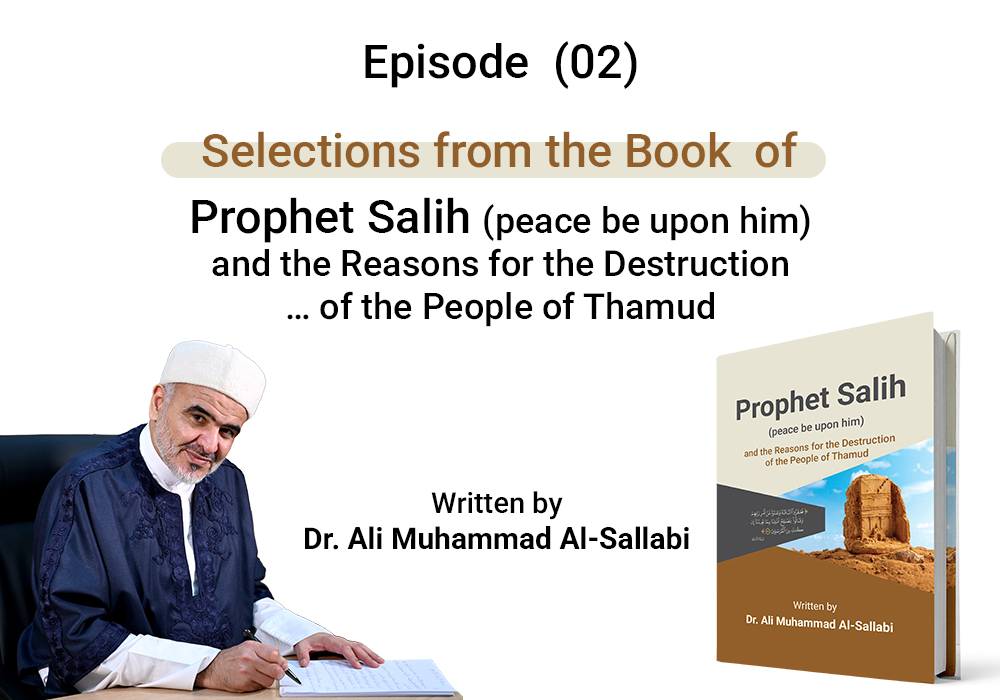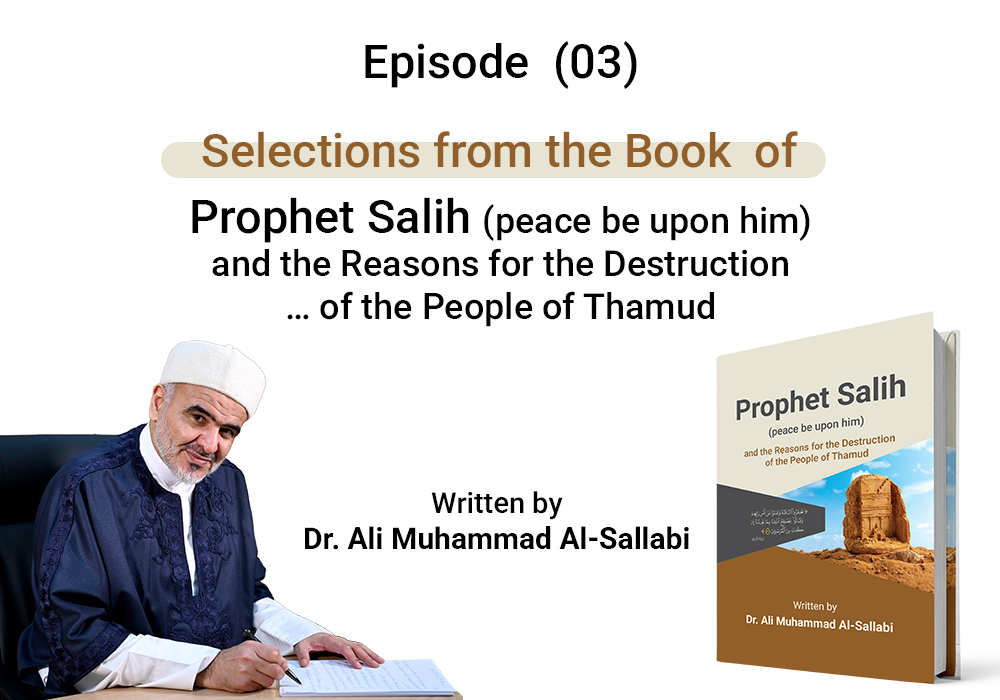Selections from the Book Prophet Salih (peace be upon him) and the Reasons for the Destruction of the People of Thamud …
Written by Dr. Ali Muhammad al-Sallabi...
Episode (01)
The Thamud are attributed to Thamud ibn A’ir ibn Iram ibn Sam. Some historians believe that Thamud was the brother of (Jadis and Tasm) and that they were the sons of Aabir ibn Iram ibn Sam ibn Noah. Others suffice by tracing their lineage back to ‘Aad, considering them a remnant of ‘Aad.
As for the prophet, he is: Salih, son of ‘Ubayd ibn Mashigh ibn ‘Ubayd ibn Hajr ibn Thamud ibn A’ir ibn Iram ibn Sam ibn Noah.
Salih is a proper name referring to Prophet Salih (peace be upon him), and "Salih" is an ancient Arabic term. The word "salih" refers to a suitable and appropriate path that remains fit for travel and work at all times, never subject to defect. It signifies someone who is honest, trustworthy, beneficial, positive, productive, and constructive—never causing harm or spreading corruption. He constantly directs matters towards righteousness and is always opposed to corruption. "Salih" is derived from "salah" (righteousness), meaning something beneficial and good in every matter. It is a name uniquely associated with an Arab prophet, and all prophets are righteous.
Islamic historians agree that the Thamud were Arabs, and they almost universally agree that they were from the Arab tribes that originated in the south. However, they have different opinions regarding their origins. Some believe that they were remnants of the people of 'Aad, and thus they think that they originated in Yemen, but were later displaced by the Himyarites, who drove them north, and they settled in the region of Al-Hijr.
Another group believes that they were remnants of the Amalekites, which may have led some modern historians to argue that the Thamud were a faction of the Hyksos, who were expelled by King Ahmose I around 1575 BCE from Egypt. They suggest that the Thamud settled in the Al-Hijr region, where they carved houses out of mountains, similar to the ancient Egyptian tombs they had seen during their time in Egypt. Dr. Muhammad Bayoumi has responded to and refuted these historical trends.
A third group claims that the Thamud were southern Arabs who migrated to the northwestern part of the Arabian Peninsula, similar to the many southern tribes known for their frequent migrations.
Regardless of the differing opinions, there is evidence suggesting that the Thamud were among the tribes that settled in the northern part of the Arabian Peninsula.
- Ali Muhammad al-Sallabi, Prophet Salih (peace be upon him) and the Reasons for the Destruction of the People of Thamud, pp. 19-21.
- The Beginning and the End (1/196).
- Historical Studies from the Quran, Muhammad Bayumi, Dar Al-Nahda Al-Arabiya, Beirut, 2nd ed., 1988 AD (1/265).
- The Names of the Prophets, Their Meanings and Implications, Khaled Mohammed Khaled, Nour Horan for Studies, Publishing and Heritage, 1st ed., 2016, p. 83.
The Pre-Islamic Era, Muhammad Mabrouk Nafi’, Al-Saada Library, Egypt, first edition, 1948 AD, p. 36.
For further information and review of the sources for the article, see:
The Book of Prophet Salih (peace be upon him) and the Reasons for the Destruction of the People of Thamud on the official website of Sheikh Dr. Ali Muhammad al-Sallabi:




